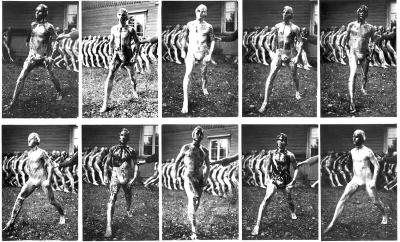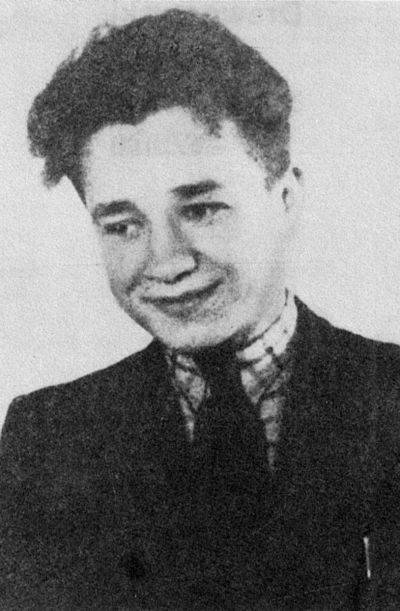Karol Broniatowski. Presence and Absence in Sculpture
Mediathek Sorted







































Karol Broniatowski's memorial to the deported Jews of Berlin

Karol Broniatowski was born in Łódź in 1945 and studied at the Faculty of Sculpture at the Academy of Fine Arts (Akademia Sztuk Pięknych) in Warsaw between 1964 and 1970. He graduated as a master student under Jerzy Jarnuszkiewicz (1919-2005). During his time as a student he was thoroughly fascinated by the human figure in different stages of abstraction. Clay was his favourite material. For his graduate exhibition, however, he chose a new material, several layers of newspaper glued together with polyester resin, which he then re-shaped over a clay model to create life-size walking human figures (ill. 1a-c). “Using newspaper” said Broniatowski, “meant that I could create ‘uniform’ figures”, whose surface was, however, different from the collage-like arrangement of newspaper fragments. The reproductions made clear that the external shell of press photos and texts was “only an appearance, a forced form”, which contradicted the design of a sculpture and reflected the endlessly continuing changes to – and modelling of – people through information.
Lined up behind and opposite one another in the open air, and spliced into snapshots (ill. 2), the “Newspaper Figures” are reminiscent of the photographic sequences made by the British photo pioneer Eadweard Muybridge (1830-1904), who was the first to document motion sequences (The Human Figure in Motion, 1901). Even though Broniatowski had something utterly different in mind, the common element is still the filtering of essentials in the human figure – the way it moves and equally its social standing. Broniatowski differentiated between his male figures, who stride, and his female figures who stand with their arms folded over their head (ill. 28, 29). The relationship between the individual and the masses, personal roles and socialisation became one of the most important themes in sociology at the end of the 1960s: in Germany in particular in the lectures given by Jürgen Habermas (Stichworte zur Theorie der Sozialisation, 1968). With this in mind Karl Ruhrberg has described Broniatowski’s figures as “anonymous, they possess no individuality, they are simultaneously impersonal and supra-personal, they are equally ‘masses’ and ‘representatives’.”
In gallery spaces the artist brings them together in dramatically arranged environments, by hanging them from the ceiling as a moving group, having them walk or climb up walls in a particular direction, or even by placing them together in discussion groups. According to Mariusz Hermansdorfer, they are “portrayed as fleeing from something that threatens their existence and provokes a a general panic […] It is a community exposed to pressure, Terror and danger, a mass of people that you can indeed differentiate into individuals, but who are clearly unified by how they act and what they have experienced.” These environments caused a furore, which reminded Ruhrberg of the “proximity of theatrical tendencies to contemporary pictorial art, performances and happenings”, not only in exhibitions in Poland (Galeria Współczesna, Warsaw 1970; Biuro Wystaw Artystychnych, Lublin 1971, (ill. 3a); Galeria Arkady, Krakau 1971), but also at the Biennale in Venice in 1972 (ill. 3b). In Warsaw the environment was entitled “Threat”, in Kraków the headline was “Forced Landing”. “Threat”, according to Wojciech Skrodzki in the standard work “Contemporary Polish Sculpture” (1977), “was a link to the tragedy of the ‘September campaign’, whereas “Forced Landing” portrayed a more general situation grounded in the sensitivities of contemporary humanity. In both arrangements the gallery space was filled with bent over, walking human figures who exuded an atmosphere of panic, desperation and defencelessness.”






















































































